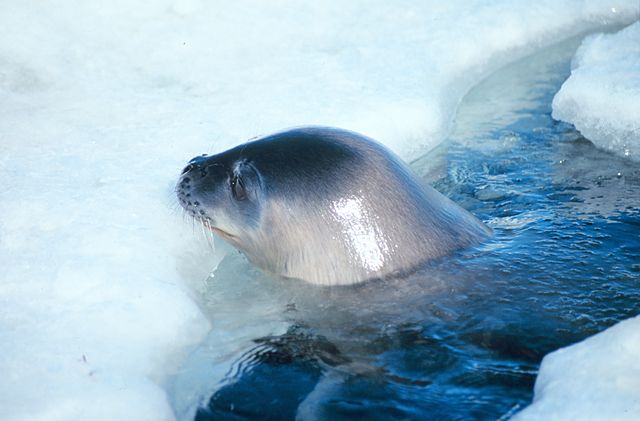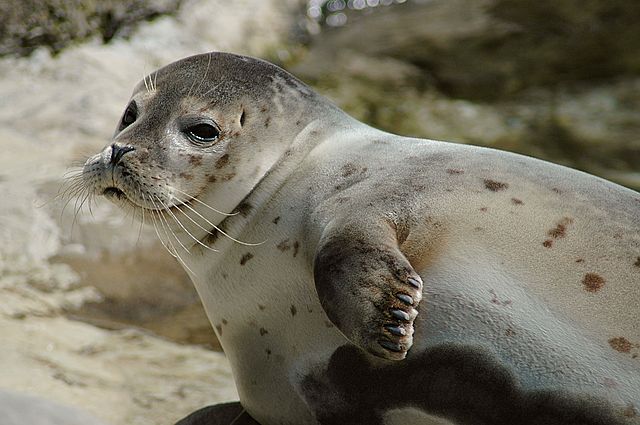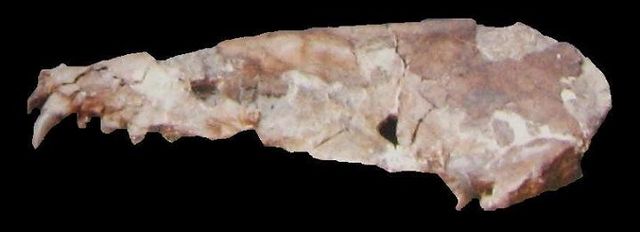The Weddell seal is a relatively large and abundant true seal with a circumpolar distribution surrounding Antarctica. The Weddell seal was discovered and named in the 1820s during expeditions led by British sealing captain James Weddell to the area of the Southern Ocean now known as the Weddell Sea. The life history of this species is well documented since it occupies fast ice environments close to the Antarctic continent and often adjacent to Antarctic bases. It is the only species in the genus Leptonychotes.
Weddell seal
Skull
A Weddell seal at a breathing hole
Baby Weddell seal, Adélie Land
The earless seals, phocids, or true seals are one of the three main groups of mammals within the seal lineage, Pinnipedia. All true seals are members of the family Phocidae. They are sometimes called crawling seals to distinguish them from the fur seals and sea lions of the family Otariidae. Seals live in the oceans of both hemispheres and, with the exception of the more tropical monk seals, are mostly confined to polar, subpolar, and temperate climates. The Baikal seal is the only species of exclusively freshwater seal.
Earless seal
Fossil Pliophoca skull
Skeletal anatomy of a harbor seal. 1. Skull. 2. Spine. 3. Tail. 4. Hindlimb. 5. Forelimb. 6. Shoulder. 7. Pelvis. 8. Rib cage.
Harbor seal skull (Phoca vitulina)








